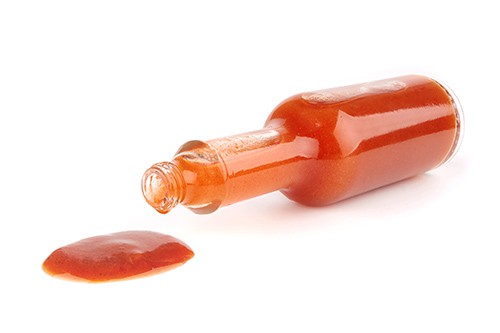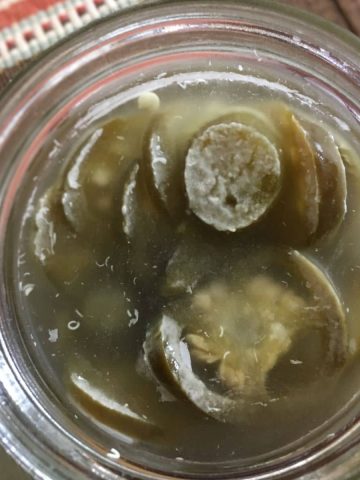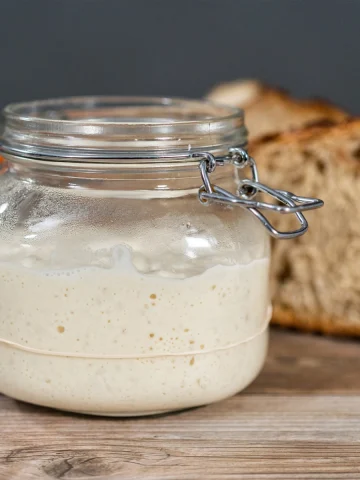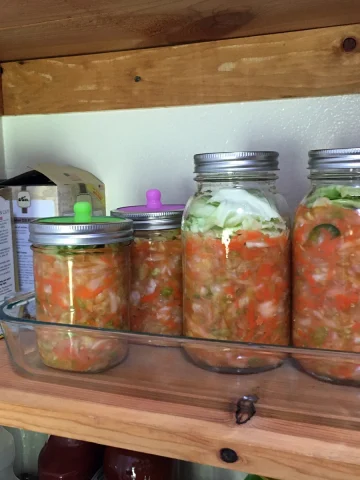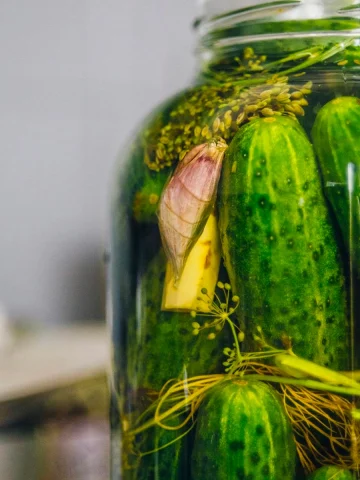How To Keep Fermented Hot Sauce From Separating
Nobody likes to reach for their favorite bottle of fermented hot sauce to see it has separated and become rather unsightly. Of course, after shaking it up, it returns to normal. But there has to be a way to keep your hot sauce from separating in the first place.
There is a solution to the problem of separated fermented hot sauce. It is a binding agent called Xanthan gum; vigorously blended into the hot sauce will prevent the ingredients from separating and create a stable sauce.
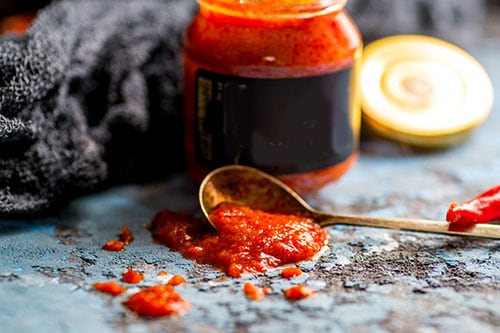
Brightly colored and full of explosive flavor, the hot sauce adds heat and richness to various dishes and is beloved worldwide. Traditional (and highly popular) hot sauces like Tabasco and Sriracha are made using fermentation.
In the late summer or early fall, just as the leaves begin to change, produce stands and farmer’s markets are full of fresh ripe chilies begging to be combined with salt and left to ferment in mason jars. Healthy bacteria grow and add flavor and health benefits to this spicy condiment, and the cute sauce bottles make great gifts.
These little jars of powerful spice have a cult following with anyone who enjoys international foods. It’s always been a popular recipe to make at home as well.
While making a fermented hot sauce is easy, the main ingredients are chilies, salt, and plenty of time; you might face a common challenge when storing the yummy concoction.
What Causes Sauces To Separate?
Oil (or fat) and water don’t typically mix, yet we use both to create many sauces. However, the chile particles and vinegar tend to separate with fermented hot sauce.
You must add an emulsifier to the brew to smooth the emulsion of these two ingredients and keep it from separating.
How to Keep Fermented Hot Sauce from separating: use Xanthan Gum
Xanthan gum is a polysaccharide with many culinary uses, including a common food additive. It is an active thickening agent and stabilizer to prevent sauces from separating when stored.
How much Xanthan Gum to use in Hot Sauce
Xanthan can be tricky to use in your home recipes; however, a tiny bit goes a long way. You would only use around ⅛th of a teaspoon for a full blender of hot sauce that has already been fermented.
Use too much, and you’ll end up with one big gloopy mess on your hands.
Uniform mixing is essential, so it’s best to use a mechanical mixer to blend when possible. If you cannot find xanthan gum, you can also use arrowroot as a thickener that won’t change the flavor of your sauce.
After the sauce has fermented, dissolve the xanthan gum in 2 tablespoons of water and add it to the blender with the sauce. Blend for a solid minute.
Let the sauce rest for one hour before bottling to allow any trapped air in the sauce (from the blending process) to escape. Bottle and store. The sauce will keep for a year or more.
Storage Solutions For Fermented Hot Sauce
Fermented hot sauce is a living food that is rich in beneficial bacteria. That makes it last a long time when stored correctly. Learning correct storage procedures will ensure you can make large batches at a time, and they won’t go to waste.
Hot sauce will continue to ferment long after you make it. Storing it in the refrigerator will slow the process, so your sauce will last longer.
The sauce should be stored in a container that allows carbon dioxide to escape without letting in any additional oxygen, which could cause yeast or mold to grow.
Your best bet is a glass mason jar with an airtight lid set in a cool, dry place. While uncooked hot sauce may only last a few weeks, fermented hot sauces that are correctly stored can stay good for up to a year or more.
No way you will make it last that long, though, because it’s so delicious! Refrigeration of a fermented sauce isn’t 100% necessary, but it will make your shelf life much longer.
Did I answer all your questions about how to avoid separation in fermented hot sauce?
In this post, we looked at fermented hot sauce's simple yet complicated world.
We looked at how a tiny pinch of xanthan gum can solve the problem of hot sauce separating by making it thicker.
Now, go make some fantastic fermented hot sauce!
Cheers!
If you want to buy any fermentation equipment, don’t forget to check out my Recommended Products Page (click to see my page), which breaks down all my best picks by category.
I always hand-select items I own, have used, or have researched well to ensure they are great. I also give top-of-the-line and inexpensive alternatives, so my choices work for any budget.
Related Fermentation Guide
Now that you’ve learned the trick to preventing hot sauce from separating and how much xanthan gum to use in hot sauce, here are a few things that you might find interesting…

